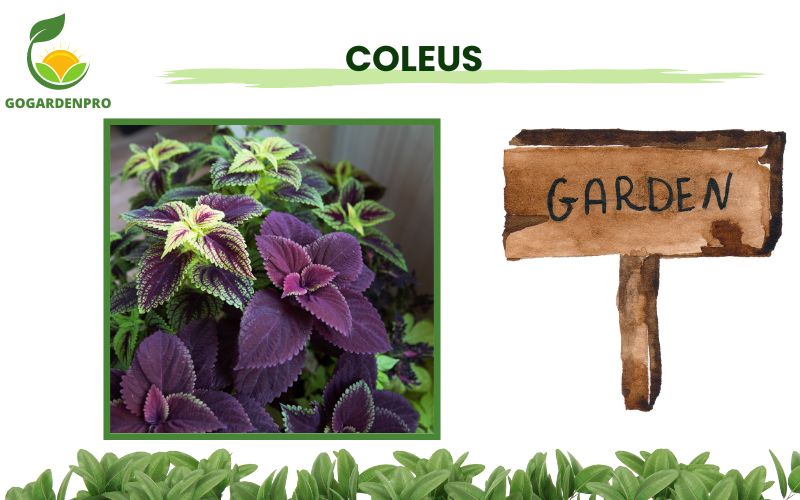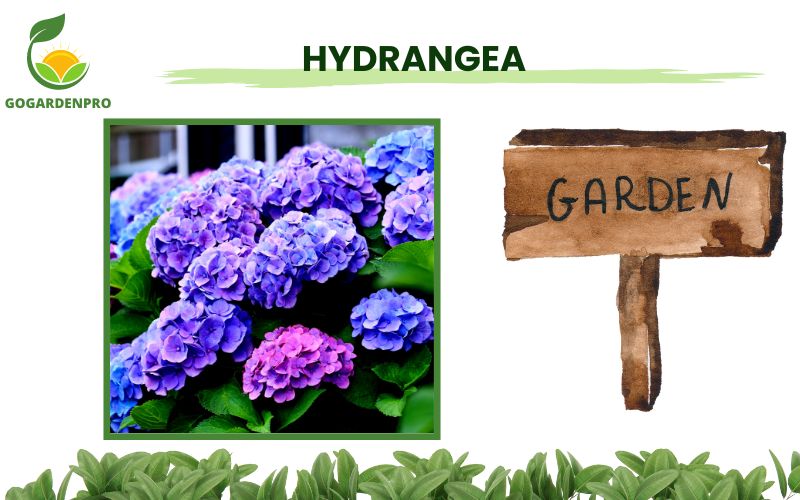Welcome to GoGardenPro, where we inspire and educate passionate gardeners about container plants for shade. If you’re looking to brighten up your shaded spaces, we’ve curated a list of the best plants that thrive in low-light conditions. Let’s dive in and discover which plants will make your garden shine, even in the shade.
Contents
12 Best Container Plants for Shade
Begonia

Begonia adds vibrant color to any shaded container garden. It thrives in partial sun to shade, making it perfect for shaded areas that need a pop of brightness.
The height of this plant ranges from 6 to 36 inches, ensuring a beautiful display. Begonias also make an excellent choice for brightening up window boxes or hanging baskets.
Coleus

Coleus is a standout in any garden with its bold foliage colors ranging from purple to chartreuse. It thrives in partial sun to shade and adds a striking visual element to any container.
Use it as a filler, thriller, or spiller to create dynamic arrangements in your shaded garden spots.
Hosta
Hosta thrives in full shade and is known for its lush foliage. It’s a standout in any shaded container garden. With its height ranging from 6 to 48 inches, hosta adds a beautiful green backdrop to your garden design
Fern
Ferns bring a natural woodland effect to container gardens. With a habit that varies by species, ferns like the Maidenhair Fern thrive in partial sun to shade. They’re great for adding texture and a lush, green appearance to any shaded area.
Hydrangea

The Hydrangea is a favorite for shaded gardens, especially with dwarf varieties like Little Quick Fire Hydrangea. It performs well in containers, offering long-lasting flowers that brighten up the shade.
Hydrangeas can grow up to 15 feet tall, adding height and drama to your garden.
Fuchsia
Fuchsia is perfect for hanging baskets in shaded areas. With a prolific bloom and a range of vibrant colors, it thrives in partial sun to shade. The trailing varieties of Fuchsia are especially suited for containers, creating a cascade of flowers that brighten any low-light spot.
Caladium
Caladiums are renowned for their vibrant color and shade adaptation. They are an excellent choice for shaded containers, where their colorful leaves stand out. Caladiums like Pink Symphony and Iceberg bring a tropical feel to any shaded area.
Boxwood
Boxwood offers structure and year-round color to your shaded container gardens. With its sculptural form, it’s ideal for creating topiaries or placing in classic urns. Boxwood thrives in part sun to dappled shade, making it a versatile addition to any garden.
Heuchera (Coral Bells)

Heuchera, or Coral Bells, is known for its versatile, colorful foliage. It thrives in partial sun to shade, making it perfect for adding splashes of color to shaded containers. Combine it with other plants like Coleus and Astilbe for a dynamic garden display.
Impatiens
Impatiens are unbeatable for nonstop summer blooms in the shade. They thrive in partial sun to full shade and are ideal for massing in color bowls or using as fillers in window boxes and hanging baskets.
Torenia (Wishbone Flower)

Torenia, also known as the Wishbone Flower, is an underutilized beauty that blooms prolifically in shaded areas. It’s perfect for brightening up deeply shaded spots with its snapdragon-like flowers in colors like blue, purple, and pink.
Creeping Jenny
Creeping Jenny is a versatile ground cover that spills over the edges of containers, adding movement and color to shaded gardens. It pairs beautifully with plants like Caladium and Hosta to create a vibrant and lush container garden.
Designing and Arranging Shade Container Gardens
Designing a shade container garden is all about balance. Combine different plants to achieve a visually appealing mix. For instance, Caladiums and Boxwood work beautifully together, with the bold colors of Caladiums contrasting the green structure of Boxwood.
You can also create height and depth by using containers of varying sizes. Place taller plants like Elephant’s Ear at the back, with mid-height plants like Fuchsia in the middle, and low-growing or trailing plants like Creeping Jenny at the front.
Care and Maintenance of Shade Container Plants
Maintaining a shade container garden requires attention to detail. Start with proper watering techniques—shade-loving plants like Hosta and Fern need regular watering, but you must avoid overwatering. The soil should remain moist but not soggy.
Fertilization is also key to promoting healthy growth in low-light conditions. A balanced, slow-release fertilizer will ensure that your plants receive the nutrients they need over time.
Regular pruning and deadheading are essential to encourage continuous blooms, especially for plants like Impatiens and Begonia.
Year-Round Shade Container Gardening Tips
Finally, to keep your shade container garden looking its best year-round, select plants that can transition smoothly through the seasons.
Hellebore is an excellent choice for winter, with its evergreen foliage adding life to your garden even in the coldest months.
As the seasons change, switch out summer bloomers like Fuchsia for fall and winter varieties like Hydrangea and Boxwood. This way, your garden remains vibrant and full of life, no matter the time of year.
FAQ container plants for shade

What are the best container plants for full shade?
Ferns, hostas, begonias, and coleus are excellent choices for full shade.
How often should I water container plants in the shade?
Water less frequently than in full sun but keep the soil consistently moist.
What kind of soil is best for shade container plants?
Use well-draining potting soil rich in organic matter, with added compost for moisture retention.
Can vegetables grow in shaded containers?
Leafy greens like lettuce and herbs like parsley can grow well in partial shade.
Are there any trailing plants suitable for shade containers?
Ivy, creeping Jenny, and bacopa are good trailing options for shade.
Conclusion
At GoGardenPro, we’re here to help you create beautiful, thriving gardens, even in the shade. Explore more gardening tips and connect with our community at gogardenpro.com. Leave a comment or share this article to spread the

